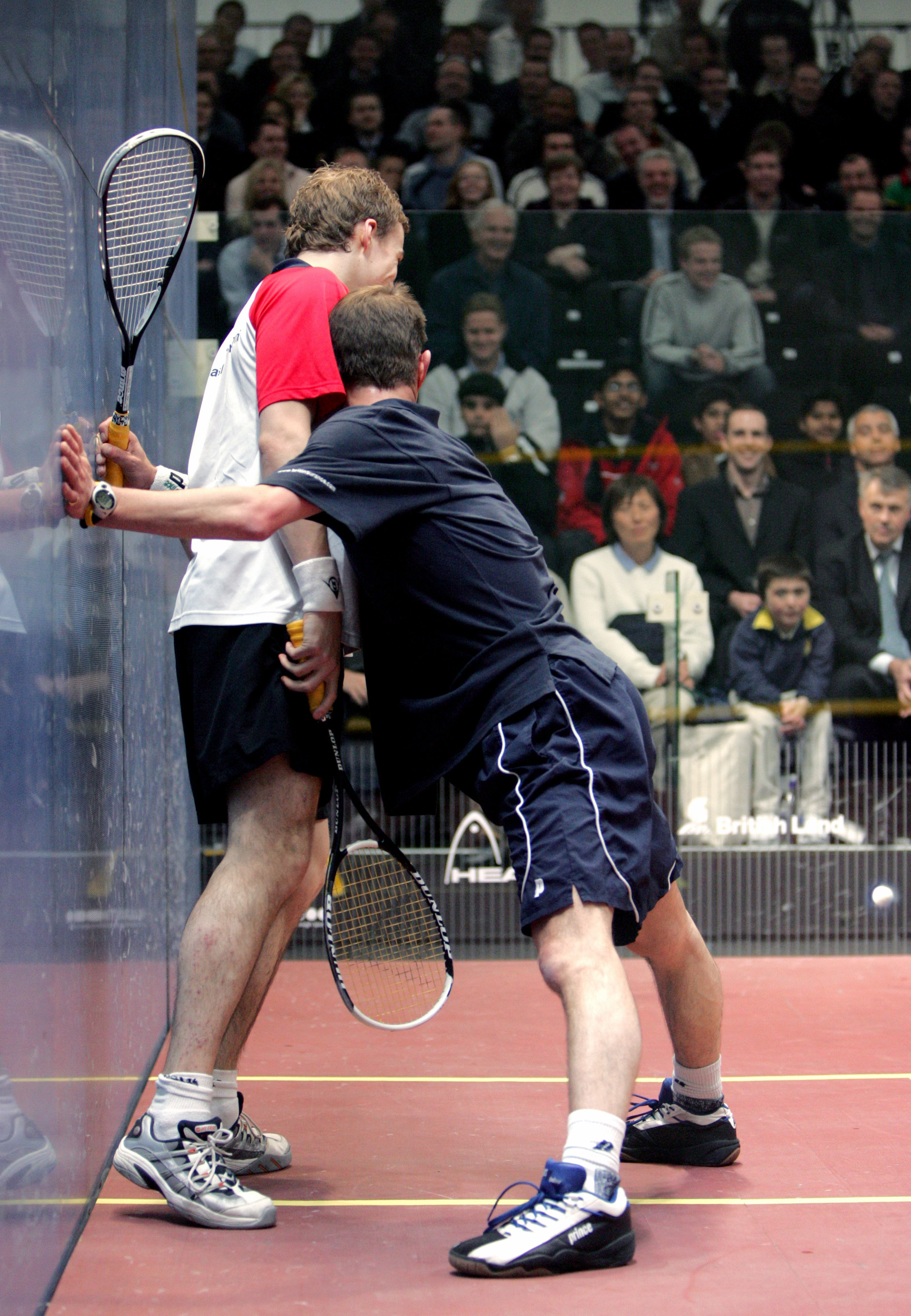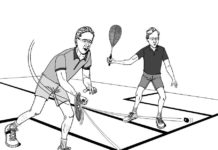By Rod Symington, WSF Referees and Rules Committee
I have a regular correspondent in India who sends me questions about the Rules, describing various scenarios and asking what the decision should be. Unfortunately, trying to capture a squash episode in words is very difficult—and deciphering those words into the precise episode the writer saw is almost impossible! So I inevitably respond: “Send me the video.”
Well, my correspondent took me at my word—and lately he has been sending me video clips and asking: “What do you think of the referee’s decision?”
A recent example concerned a “No Let” given to a player who ran into his opponent, and that leads me to this month’s column.
There is an unfortunate and widespread belief that if you run into your opponent, you are entitled to a let. Not so. If only life were so simple!

When you are the incoming striker, you do have the right to unobstructed access to the ball, but more important is your obligation to move directly to the ball in order to play it. And to make every effort to play it—short of knocking your opponent down.
All too often a player will be somewhat out of position, see the opponent’s shot, and…run into the opponent—instead of moving to the spot where the ball is. The player calls “Let” and thinks the let should be automatic. It is not.
What I just described is called “playing the body,” and it is sometimes innocent. And sometimes not so innocent. In all cases, however, it should lead to the denial of a let.
Often the “innocent” player who indulges in this tactic believes that any form of interference justifies a let. But in order to get a let, you must be able to reach the ball before it bounces twice and make a good return—and you must show that you could reach the ball. It is not sufficient to behave as if to say: “I could have reached that ball if I had tried.” In squash there are no prizes—and no lets—for past performance or future promises. Every time you want a let, you must make every effort to move to the ball and show that you deserve the let.
The other type of player uses the tactic of “playing the body” in order to get a cheap let when out of position. This is nothing less than cheating, and the only way to stop it and stamp it out is to deny such a player a let and to say: “You played the body, not the ball.” This is a very common tactic and detrimental to the game.
Of course, it can also happen that a player makes a mistake and goes the wrong way. For example, the ball goes down the side wall, the outgoing striker (the opponent) clears towards the center of the court, and the incoming striker moves (mistakenly) into the opponent’s body instead of moving towards the side wall—in effect, he goes the wrong way. Too bad: A mistake is a mistake is a mistake. It is no different from any other mistake in squash. No let!
“Playing the body” is an indication that the player is not making every effort to play the ball. The two major requirements in squash are for the outgoing striker to make every effort to clear, and for the incoming striker to make every effort to get to and play the ball. Only when these two provisions are fully observed can the game flow without constant interruptions and appeals for lets.
Note: To see the video clip referred to in this article, visit squashmagazine.com, click on “Rules,” and find the video—“Playing the body.”





